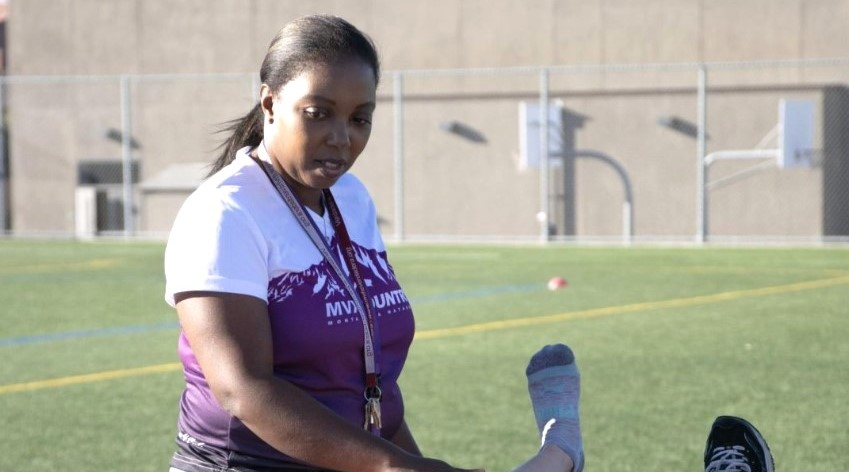What Can Be Done About Burnout in Athletic Training?
 Burnout affects Athletic Trainers. And burnout has been a big concern for dozens of years now, because we are losing so many ATs at a time when they are needed most. According to job outlook reports, the need for ATs will continue to rise 17% from 2021 to 2031.
Burnout affects Athletic Trainers. And burnout has been a big concern for dozens of years now, because we are losing so many ATs at a time when they are needed most. According to job outlook reports, the need for ATs will continue to rise 17% from 2021 to 2031.
But more worrisome is the fact that Athletic Trainers are leaving the profession at a young age. According to a recent study, the average age of those ending their AT career is 31 (with men who average leaving at 35 years old, while women average leaving at 28.)
Out of all healthcare providers — including physicians, nurses, assistants, and techs — ATs have the lowest retention rate.
There are many factors causing the exodus of Athletic Trainers, including job fit and other various family or life-related personal reasons, but the largest factor affecting most departures are the working conditions.
Working conditions like long and irregular hours, travel demands, lack of support, lack of proper staffing, and work overload. And AT compensation factors heavily into associated burnout. The stress and strain of the job, the lack of understanding from administrators and employers about roles and responsibilities, and career path limitations also add to the conditions.
What can be done?
Most advice out there for ATs makes sense. Taking care of yourself should be a top priority. And most do strive to get better sleep, workout, and eat well.
But those pesky working conditions can interfere, making self-care more and more difficult. The long hours, working 7 days a week, constantly changing schedules, and then having to grab food on-the-go can often interfere with these objectives.
Rest and time off are also suggested, but the lack of proper staffing also gets in the way of ATs taking vacations or even a day away.
Others have suggested that ATs can mitigate these risk factors by establishing boundaries and setting up expectations of the job before starting and during their tenure, when the job becomes unpalatable. If they can determine their optimal priorities and maintain focus on completing them, there might be less stress and strain from overwork. And some have stated that ATs must learn to say "no" when appropriate.
Is that enough to stem the tide?
But is that requiring too much of the Athletic Trainer? Sure, they develop a support system of friends, family and co-workers and they can strive for more of a work-life balance. Eating healthy and exercise are perfect options for everyone, but not everyone has the time they need. Do they have a path to grow their careers? Do they have the money they need? Are they properly equipped to do the job? Are there enough people available to help out? This should not be entirely on the Athletic Trainer — help needs to come from elsewhere.
Salary is one of the biggest contentions in the field. As of now, ATs have the lowest compensation rates among all healthcare providers (across nursing, emergency technicians, physicians, etc.) While salary would certainly not solve every problem of their working conditions, it is a known fact that jobs with higher compensation rates have higher retention rates.
Fixing staffing issues would go a long way to help the burnout situation, as well. With the proper staff in place, ATs could have more balanced schedules, a reduction in hours worked, and less stress from overwork.
Providing ATs with the proper tools should be a huge priority for administrators and leaders looking to keep ATs happy. Technology is available for sports medicine pros today - from various sources - that help them document details about their patients, access their records quickly, communicate with all parties, and report on their activities.
Our whole goal at Healthy Roster was to provide them with easy-to-use tools that help Athletic Trainers do their jobs more efficiently and effectively... so that they have more time in their day. 
But... the cost!
Of course, what you'll notice from these suggestions is that spending is involved. Some times a great deal of spending, as a matter of fact. And that's what stops initiatives like these in their tracks.
But nursing salaries have gone up dramatically in the past five years as they faced shortages and prevent turnover. Many healthcare facilities have pushed up wages from 6% to 15% in the last year. "We were forced to," said Sarah Hanak, CNOF of Citizens Memorial Hospital in Bolivar, Mo., who recently raised its nurses' salaries by 5%. "We absolutely have to stay competitive."
Do schools, hospitals and health systems want to wait until there is high turnover and AT shortages? It can cost a lot to find, onboard, and train new employees, in any industry, but even more so in athletic training.
As for increasing the number of ATs on staff, hospitals have been forced to hire more nurses to prevent losing the ones they already have. "We are employing more nurses now than we ever have, and we also have more vacancies than we ever had," said Greg Till, chief people officer at Providence Health & Services in Washington.
For the healthcare companies who have provided the proper platforms (such as EMRs and injury tracking software), they report that the Athletic Trainers are happier, have higher job satisfaction, and have more time for self care. "I really enjoy using Healthy Roster. It is user-friendly and really makes keeping track of injuries and general documentation a breeze," said John Bruketa, Certified Athletic Trainer at Akron Children's Hospital.
Conclusion
There are no easy answers to preventing or even slowing down the issue of burnout in athletic training. Personal factors, as well as fit, weigh heavily on their decisions and causes them to depart early. But working conditions and employment factors, which are the leading causes of burnout, can be effectively controlled.
ATs are dealing with long days (and nights!), stressful travel, erratic schedules, lack of administrative support and understanding, as well as the staffing issues.
What most do not realize is the value they bring to their settings from middle school all the way up to the professional sports levels!
Here are some numbers from a recent study:
- Sport-related injuries create nearly 20 million lost school days and an estimated $33 billion in healthcare costs per year
- 32% of parents take time off work to take students to the ER or clinic for minor injuries. ATs prevent time away from school and work
- ATs provide an average of 22 services for each ankle sprain they treat
- $1,233 is the average cost of an emergency room visit. Athletic Trainers help prevent unneeded, costly ER trips
- $14.7 million is the estimated annual cost savings in 1 state if every high school employed a fulltime AT
- $2,753,200 is the estimated value of 13,766 treatments provided by a school’s AT in a single school year
Athletic Trainers provide so much value to their employers, schools, athletes, parents, and administrators. They help in lowering the medical payments of third-party payers by reducing injury risks. They're increasing referrals to other healthcare providers. ATs help increase the student-athletes' satisfaction and well-being (reducing absenteeism, improving grades, and lowering injury rates.) With successful and healthy athletic programs, they are also helping to boost the reputation of the organization... which helps enrollment, diversity and retention. The list goes on an on.
Athletic Trainers are healthcare providers. Their unique skills affect the entire circle of care, from the first emergency response to an injury... all the way to sending that athlete back onto the field. The data shows their immediate impact and demonstrates that they are an investment and not a cost to an organization — we've now gone from "We can't afford an Athletic Trainer" to "We can't afford not to have an Athletic Trainer."
Support your Athletic Trainers and you'll keep them longer, avoid recruiting, hiring and onboarding expenses, improve their job satisfaction, help them create better outcomes, and boost staff productivity.
If you're interested in learning more about how we provide the necessary tools they need to further reduce burnout, talk to us today! And explore how we save them time when documenting injuries.
![HR Logo [Recovered]_Full Color Vertical-1](https://blog.healthyroster.com/hs-fs/hubfs/HR%20Logo%20%5BRecovered%5D_Full%20Color%20Vertical-1.png?width=199&height=178&name=HR%20Logo%20%5BRecovered%5D_Full%20Color%20Vertical-1.png)
 By
By


